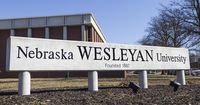Across both sides of the Atlantic, the higher education sector is facing a period of acute financial strain, with universities in the United Kingdom and the United States grappling with job cuts, staff unrest, and a pressing need to rethink their futures. This week, tensions reached a boiling point at Sheffield’s two main universities, while Nebraska Wesleyan University in the U.S. Midwest announced a round of layoffs, each institution citing mounting financial challenges as the root cause.
At the heart of the turmoil in Sheffield, England, are staff at Sheffield Hallam University and the University of Sheffield, who on October 9, 2025, voted decisively in favor of strike action. According to the BBC, the disputes center on job cuts, mounting workloads, and deteriorating working conditions. The University and College Union (UCU), representing academic and support staff, reported that 79% of participating staff at Sheffield Hallam voted for strike action, with 88% supporting action short of a strike on a turnout of 54%. Meanwhile, at the University of Sheffield, 77% voted for a strike and 82% for action short of a strike, with a turnout of 52%.
These numbers reflect deep-seated anxiety among university employees, who have watched their institutions embark on ambitious building projects and restructuring plans while simultaneously trimming staff numbers. At Sheffield Hallam, some 500 staff members left through voluntary severance in 2024, a move the university says was designed to avoid compulsory redundancies. Yet, the UCU remains unconvinced. A spokesperson for the union told the BBC, “The dispute at the site centers on the refusal of Sheffield Hallam’s leadership to rule out compulsory redundancies, despite already having slashed jobs during 2024.”
Staff concerns are compounded by what the union describes as “spiralling workloads as fewer staff are left to do more work.” The UCU has also criticized the university’s financial priorities, pointing to more than £200 million invested in major building projects—including a £140 million new campus in Sheffield and a controversial over £10 million investment in a London campus franchise. “The cuts are being driven by the university’s decision to plough more than £200m into major building projects, while announcing further budget reductions of £28m for 2025-26,” the UCU spokesperson said. The union contends that the London campus is “unlikely to deliver returns for years to come.”
Sheffield Hallam University, for its part, expressed disappointment at the planned industrial action but defended its decisions. A spokesperson told the BBC, “Like all universities, we have had to make some tough decisions due to the financial challenges being faced across higher education. To date, we have been able to make significant savings to set us on a path to a more financially sustainable future without the need for any compulsory redundancies.” The university emphasized its commitment to “continue to seek to avoid compulsory redundancies where possible” and to “engage closely with our staff and trade union representatives.”
The University of Sheffield, while not currently planning compulsory redundancies, is also reviewing academic structures and staffing levels. A university spokesperson said, “We stand by our commitment to make no compulsory redundancies this calendar year and will continue to work with trade unions to avoid them wherever possible in the future as the university adapts to the pressures facing the higher education sector.” The spokesperson added that, should industrial action go ahead, “we expect the vast majority of our students and staff will be unaffected. We will do everything we can to minimise any potential impact.”
The situation in Sheffield echoes developments thousands of miles away in Lincoln, Nebraska, where Nebraska Wesleyan University announced on October 9, 2025, the layoff of 17 staff members. The decision, according to university president Darrin Good, was a direct response to “growing financial realities” on campus. In a letter to the Nebraska Wesleyan community, Good explained, “These decisions were driven solely by financial realities and in no way reflect the dedication, performance, or contributions of the individuals affected. Each employee, whose position was eliminated, was offered severance and continued health insurance for a period of time.”
Unlike the situation in Sheffield, Nebraska Wesleyan’s layoffs did not affect faculty members. Still, the university formed a faculty advisory work group to review academic programs and positions, signaling that more changes could be on the horizon. The university is also looking at trimming expenses, including closing vacancies, to avoid additional layoffs, Good said.
The financial pinch at Nebraska Wesleyan has its roots in shifting enrollment patterns. As reported by the Lincoln Journal Star, the university experienced strong enrollment growth before the COVID-19 pandemic, prompting increased staffing and expanded programming. But as enrollment returned to its historical level of about 1,400 students, the institution found itself overextended. “Now, we need to realign to match current enrollment,” Good explained. The university is embarking on what it calls a “proactive, faculty-led effort designed to ensure that our academic offerings align with our fiscal reality while remaining strong, relevant, and responsive to student needs and future career opportunities.”
Good sought to reassure the campus community, stating, “By addressing our financial challenges today, we’re ensuring that Nebraska Wesleyan remains a strong and vibrant university tomorrow. We are not going anywhere. For 138 years, this university has transformed lives—and it will continue to do so for generations to come.”
Both the UK and US cases highlight a broader crisis facing higher education: a collision of shrinking budgets, rising costs, and evolving expectations from students and the public. Universities are being pushed to modernize facilities and expand offerings, even as they face stagnant or declining revenues, shifting demographics, and increased competition. In the UK, the situation is further complicated by government funding constraints and debates over the value and direction of higher education. In the US, regional and private universities like Nebraska Wesleyan are especially vulnerable to enrollment swings and economic downturns.
For staff and students, the consequences are all too real. In Sheffield, industrial action could disrupt classes and campus life, though university leaders are working to minimize any fallout. In Nebraska, the loss of 17 staff members is a stark reminder of the human cost of financial belt-tightening, even as the university insists its educational mission will remain intact.
As both regions navigate an uncertain future, the voices of staff, students, and administrators will shape how higher education adapts to the pressures of the present—and the promise of the years ahead.


